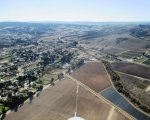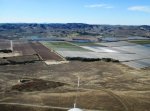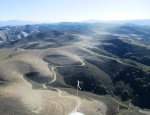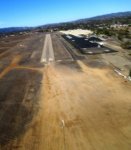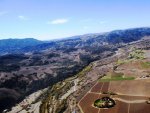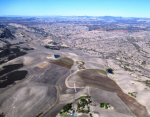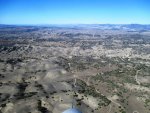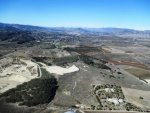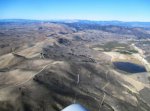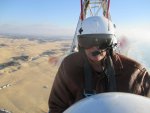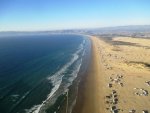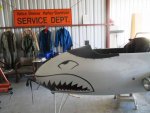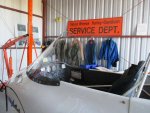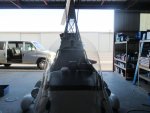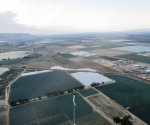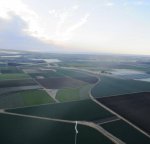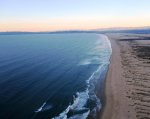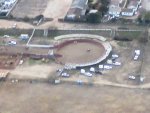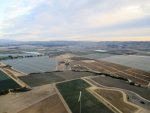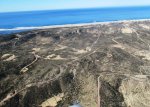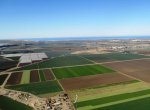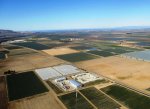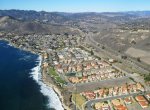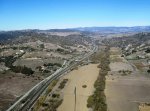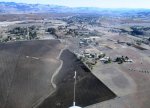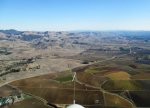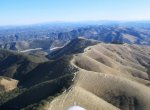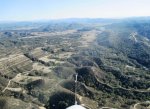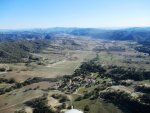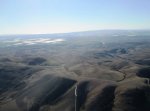- Joined
- Oct 30, 2003
- Messages
- 18,374
- Location
- Santa Maria, California
- Aircraft
- Givens Predator
- Total Flight Time
- 2600+ in rotorcraft
A magical flight to Santa Ynez.
A magical flight to Santa Ynez.
I spent some time at the hangar Friday trying to find the source of some oil that ends up on the firewall when I exceed eighty knots. Finding the source is a slow process because I can’t watch it at eighty knots so I have to clean and then try to find the path. Seventy five knots and no oil and there is not a direct path. I left feeling that my breather hose might have some cracks that I don’t see so I stopped by the hardware store on the way home to pick up some breather hose.
Saturday was the EAA meeting in Santa Ynez and it was elections so I wanted to be there. There were some friends there who had been supportive of my quest to become a CFI and I looked forward to sharing my success.
It was clear at day break and already 8 degrees C (46 F) headed for 21 C (70F) winds calm.
I worked through the morning minutia and headed down the hill and across the fields to SMX.
I imagined that installing the breather hose would be a quick process; silly me.
They didn’t have the clear plastic tubing I wanted so I got some that was reinforced. I had to use my heat gun to get it over the fittings. The maintenance flight went well and I worked through a second quick preflight.
The meeting was at ten hundred so I wanted to be wheels up by nine hundred. I missed the mark by about 15 minutes. I felt it was too nice a day to go direct. I figured some airspeed would be a good way to test the new breather.
I asked for a left downwind to the east south east. I was number four for takeoff.
“Experimental 142 Mike Golf, runway three zero clear for takeoff, left downwind approved, early left turn approved, have a great flight Vance.” How could I not?
The air was silky smooth as we made our way over the vineyards at 85kts indicated air speed showing 88kts of ground speed on the GPS. The wind picked up a little over the hills making for some gentle rocking and rolling. The Lycoming sounded happy making more power than usual. I was showing between 2,350 and 2,400 rpm depending on how much rising air I had. The Predator had a wonderful effortless feel as she bounded across the hills.
I felt like dogs I have seen in the back of pickup trucks with their ears flapping back and their tails wagging. Several Woo Hoos escaped my lips and were lost to the sound of the wind, rotors and engine.
I checked the automated weather observation system (AWOS) and the mechanical voice had the winds 240 at 3kts and a small change in the altimeter setting.
I began my descent and made my initial radio call; ten miles to the west descending through 2,000 feet inbound for runway 26 to land.
There were six aircraft in the pattern with two making nonstandard entries.
I reported five miles west over the quarry, inbound on the forty five over the river bridge, downwind mid field, turning base and turning final. I extended my downwind for a sail plane on a right down wind and an unannounced straight in RV went around because the sail plane landed a little long on the dirt field in line with runway 26. I don’t know if I would have seen him if I had turned base where I usually do. It would not have been close but it was unsettling never the less.
I was having fun making precise turns in the pattern and I managed my unusually high pattern speed and descent well. All my control inputs were very deliberate and they were rewarded with a gentle touch down at about 15kts with a quick exit from runway 26.
The new breather was not successful with a light oil spray on the firewall. I checked the oil and there was no visible change on the dip stick. The oil on the firewall looks cleaner than the oil on the dip stick.
I pondered over this as I walked to the other end of the airport for the meeting.
There was not a quorum. The speaker was a diver involved in raising the Russian submarine with the Glomar Explorer in the early 70s and it was very interesting if somewhat unrelated to aviation.
There were not enough people to order Pizza. I was offered a ride into town for lunch but I thought it would be more fun to head up to San Luis Obispo.
I was rewarded with smooth warm air with a steady 8kt wind out of the West. It was just enough to where I could pull the power back as I wandered along the ridge at 75kts. More happy puppy stuff.
I had too many nice pictures so I broke the story up.
A magical flight to Santa Ynez.
I spent some time at the hangar Friday trying to find the source of some oil that ends up on the firewall when I exceed eighty knots. Finding the source is a slow process because I can’t watch it at eighty knots so I have to clean and then try to find the path. Seventy five knots and no oil and there is not a direct path. I left feeling that my breather hose might have some cracks that I don’t see so I stopped by the hardware store on the way home to pick up some breather hose.
Saturday was the EAA meeting in Santa Ynez and it was elections so I wanted to be there. There were some friends there who had been supportive of my quest to become a CFI and I looked forward to sharing my success.
It was clear at day break and already 8 degrees C (46 F) headed for 21 C (70F) winds calm.
I worked through the morning minutia and headed down the hill and across the fields to SMX.
I imagined that installing the breather hose would be a quick process; silly me.
They didn’t have the clear plastic tubing I wanted so I got some that was reinforced. I had to use my heat gun to get it over the fittings. The maintenance flight went well and I worked through a second quick preflight.
The meeting was at ten hundred so I wanted to be wheels up by nine hundred. I missed the mark by about 15 minutes. I felt it was too nice a day to go direct. I figured some airspeed would be a good way to test the new breather.
I asked for a left downwind to the east south east. I was number four for takeoff.
“Experimental 142 Mike Golf, runway three zero clear for takeoff, left downwind approved, early left turn approved, have a great flight Vance.” How could I not?
The air was silky smooth as we made our way over the vineyards at 85kts indicated air speed showing 88kts of ground speed on the GPS. The wind picked up a little over the hills making for some gentle rocking and rolling. The Lycoming sounded happy making more power than usual. I was showing between 2,350 and 2,400 rpm depending on how much rising air I had. The Predator had a wonderful effortless feel as she bounded across the hills.
I felt like dogs I have seen in the back of pickup trucks with their ears flapping back and their tails wagging. Several Woo Hoos escaped my lips and were lost to the sound of the wind, rotors and engine.
I checked the automated weather observation system (AWOS) and the mechanical voice had the winds 240 at 3kts and a small change in the altimeter setting.
I began my descent and made my initial radio call; ten miles to the west descending through 2,000 feet inbound for runway 26 to land.
There were six aircraft in the pattern with two making nonstandard entries.
I reported five miles west over the quarry, inbound on the forty five over the river bridge, downwind mid field, turning base and turning final. I extended my downwind for a sail plane on a right down wind and an unannounced straight in RV went around because the sail plane landed a little long on the dirt field in line with runway 26. I don’t know if I would have seen him if I had turned base where I usually do. It would not have been close but it was unsettling never the less.
I was having fun making precise turns in the pattern and I managed my unusually high pattern speed and descent well. All my control inputs were very deliberate and they were rewarded with a gentle touch down at about 15kts with a quick exit from runway 26.
The new breather was not successful with a light oil spray on the firewall. I checked the oil and there was no visible change on the dip stick. The oil on the firewall looks cleaner than the oil on the dip stick.
I pondered over this as I walked to the other end of the airport for the meeting.
There was not a quorum. The speaker was a diver involved in raising the Russian submarine with the Glomar Explorer in the early 70s and it was very interesting if somewhat unrelated to aviation.
There were not enough people to order Pizza. I was offered a ride into town for lunch but I thought it would be more fun to head up to San Luis Obispo.
I was rewarded with smooth warm air with a steady 8kt wind out of the West. It was just enough to where I could pull the power back as I wandered along the ridge at 75kts. More happy puppy stuff.
I had too many nice pictures so I broke the story up.

